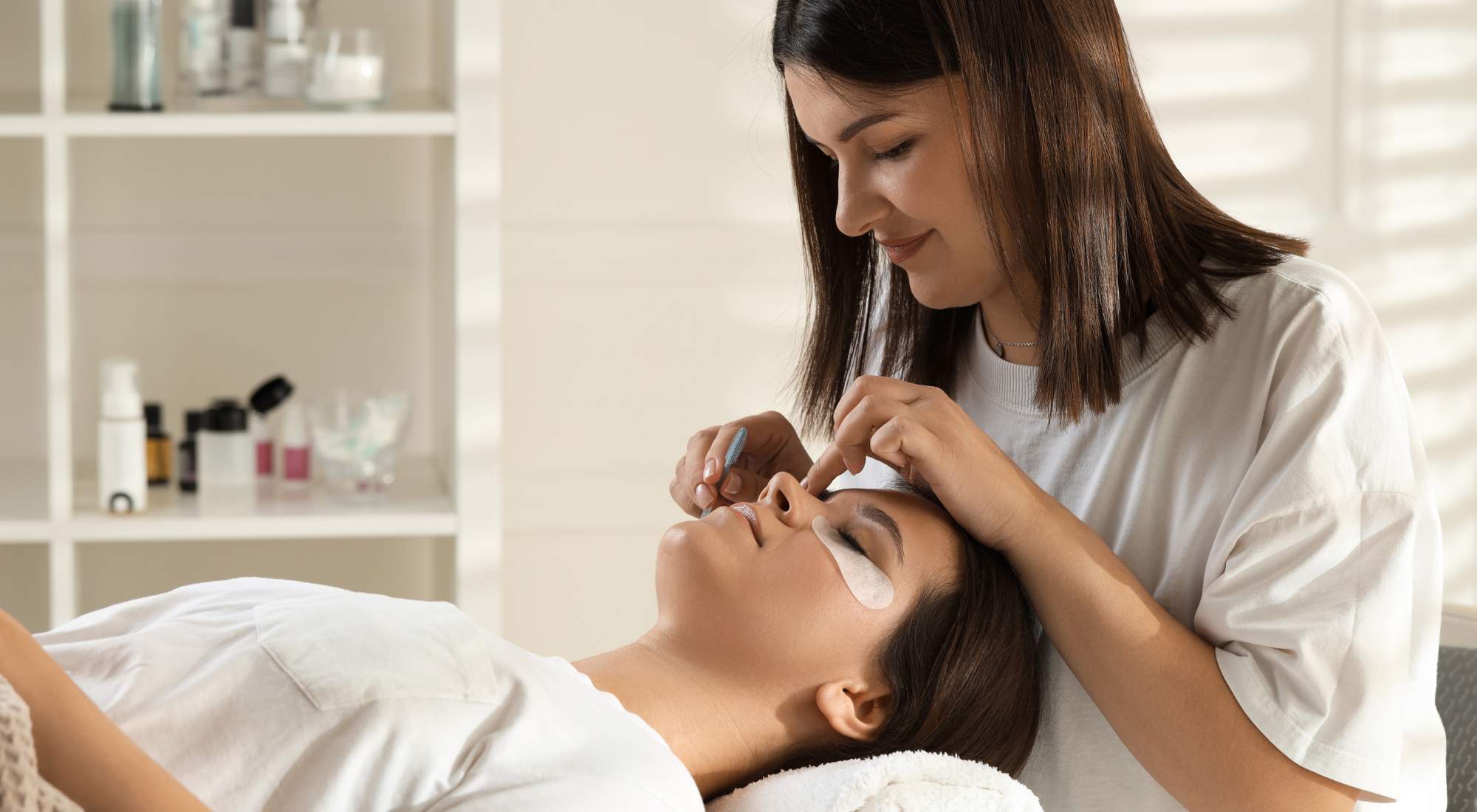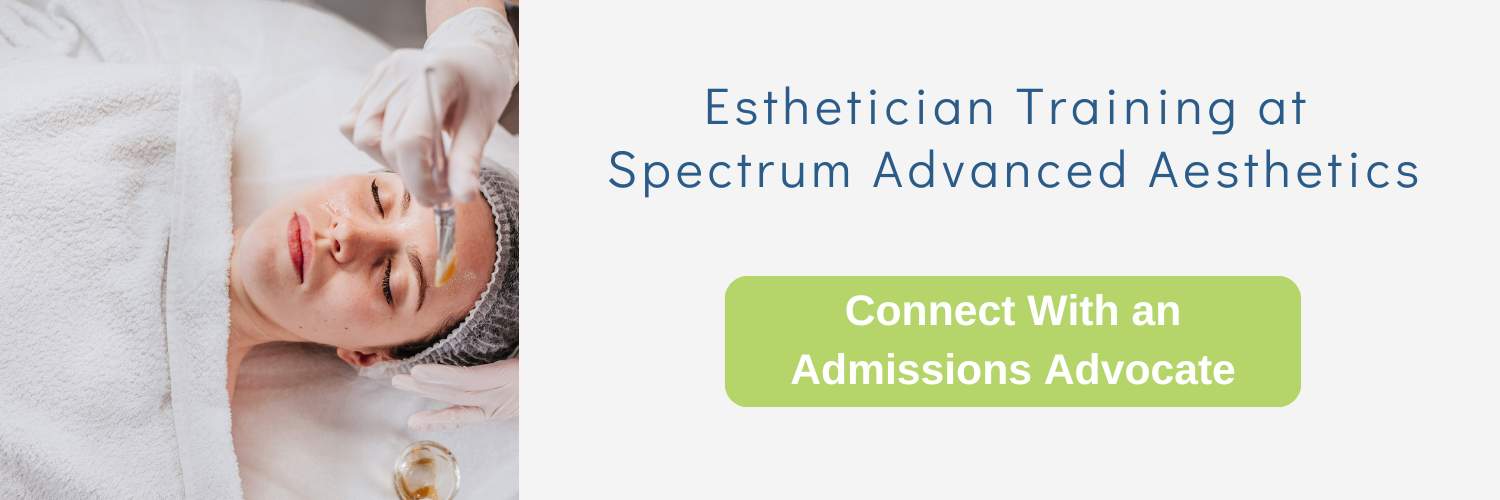Financing Your Future in Beauty: How To Pay for Esthetician School

You’ve always been passionate about beauty and skincare, and now you’re ready to turn that passion into a career. Your goal is to become an esthetician, but before starting school, you need to figure out how to pay for your education.
The dream of working as a licensed esthetician is more popular than ever. Whether you picture yourself in a day spa, a waxing salon, or a lash studio, you’ll need to complete an esthetician certification program to become a licensed esthetician, and finding a way to pay for esthetician school is essential to making your dream a reality.
In this article, we’ll cover the cost of esthetician school and how those expenses can vary by location and program type. We’ll also look at funding options ranging from scholarships and grants to different types of loans, helping you find the best way to pay for your program.
Table of Contents
- How Much Does Esthetician School Cost?
- How Do People Pay for Esthetician School?
- 4 Things To Consider Before Deciding on Financial Aid
- Receive Esthetician Training From Spectrum Advanced Aesthetics
Each state has its own licensing requirements, which determine the minimum training hours, curriculum content, and examination requirements. On average, states require 600 training hours, but the required hours can range from as few as 260 hours to as many as 1,600 hours. Licenses do not always transfer state-to-state, so if you get your education in one state but plan on moving to another state, please check with the state’s licensing board to ensure your license will transfer.
The cost of schooling is determined by the location, school type, and program length you choose. The average cost of the top ten U.S. schools is $7,433. Pennsylvania, Washington, and Utah stand out for offering some of the most affordable schools in the country, while Iowa is seen to be the most expensive, with the strictest requirements. In addition to tuition, most schools have additional costs for supplies and fees.
Spectrum Advanced Aesthetics is a top-rated esthetician school in Portland that offers quality education that will help you prepare for the State Board Exam. Our program, boasting the highest licensing exam pass rates, surpasses Oregon state requirements and features a state-of-the-art facility equipped with the latest trending equipment.
Contact our admissions office by phone or our online contact form today.

There are multiple avenues to consider while determining how to pay for esthetician school. Exploring your options can help you find the best way to finance your training and achieve your career goals.
Options to explore to finance your school tuition and fees include:
- Financial Aid
- Scholarships and grants
- Private loans
- School Specific Financial Aid and/or Payment Plans
- Working part-time
Federal Financial Aid (FAFSA)
Applying for federal financial aid is a great place to start, as it can help you determine your eligibility for assistance and make covering the cost of esthetician school more manageable.
FAFSA is a free application for federal student aid where you submit your personal information to determine your student aid index (SAI), which schools use to determine how much aid you are eligible for. After receiving your SAI, you’ll share it with your top schools to get a clearer idea of the amount of aid you may qualify for.
Factors that play into how much financial aid you are eligible for include:
- Your income and assets, or your parents’ if you’re a dependent student
- Your household size
- The cost of tuition and fees
- Being a full-time or part-time student
- State and school funding availability
Pell Grants
Awarded to lower-income families, a Pell grant is specifically designed for undergraduate students and does not need to be repaid. The maximum Pell grant you can receive for the 2025-2026 award year is $7,395.
A Pell grant covers tuition as well as fees, room and board, books, supplies, and living expenses.
Factors affecting Pell grant eligibility include:
- SAI
- Financial need
- Cost of attendance (COA)
- Enrollment status (full-time or part-time)
- Enrollment length (full academic school year or less)
Unsubsidized and Subsidized Loans
Applying for federal loans is a helpful way to finance your education with low-interest rates. Direct unsubsidized and subsidized loans are both federally funded loans, but they differ in how interest is handled.
Unsubsidized loan details are as follows:
- You have the option to borrow money without requiring proof of financial need.
- Interest starts accruing immediately upon loan disbursement.
- The repayment plans offer flexibility after you graduate or leave school.
Subsidized loan details are as follows:
- You borrow based on financial need.
- Interest doesn’t accrue while you are in school or during the grace period.
- There are flexible repayment options.
Parent PLUS Loans
If you are an undergraduate and your parents will be helping you with funding your school, the federal Parent Plus loan is an option for them. This loan is specifically for parents and cannot be transferred into the student's name. Be sure to apply for grants and scholarships beforehand to potentially lower the cost of the loan.

Federal Supplemental Educational Opportunity Grant (FSEOG)
A federal supplemental educational opportunity grant (FSEOG) is a grant awarded to undergraduates with exceptional financial need. Directly through the financial aid office at participating schools, students may receive grant awards ranging from $100 to $4,000 a year.
Schools receive a designated amount of FSEOG funds each year. When these funds are exhausted, no more awards will be available for that year. Be sure to apply for this grant as soon as possible after completing your FAFSA.
Scholarships and Grants
Scholarships and grants are an excellent form of financial support since they do not need to be repaid. You can visit the U.S Department of Labor to use their scholarship finder for more specific scholarships tailored to you.
Available scholarships include:
- Milady RISE Scholarship – 10 participants are able to receive a $500 award.
- Pro Beauty Scholarship – $1,000 in awards are given to aspiring estheticians.
- Beauty Schools Directory Scholarship – $2,500 is offered two times a year.
- Live Your Dream Award – Offers the potential to receive $1,000 to $16,000.
- LGBTQ+ Student Scholarship – Awards 9 scholarships specifically tailored to the LGBTQ+ https://partner.ascentfunding.com/spectrum/community.
- Beauty Changes Lives Scholarship – Awards over $500,000 in scholarships each year.
- Buy Rite Scholarship – A $1,000 scholarship is awarded to an individual who exemplifies the company’s core beliefs.
Private Student Loans
Private student loans are generally considered a last resort option. These loans have variable interest rates, which means that they can fluctuate depending on market conditions. This means that in some months your payments may rise, which can lead to a higher total loan cost over time.
Private loan interest rates also rely on your credit score to determine your interest rate. If you have a lower credit score, you may have a much higher interest rate than you would with a federal loan.
You can apply for a private student loan through our partner, Ascent, at partner.ascentfunding.com/spectrum.
School Specific Financial Aid and/or Payment Plans
Many schools may offer their own financial aid to help make education more affordable. They may provide scholarships, grants, or flexible and low-interest-rate payment plans.
Working Part-Time
Working part-time during your free hours can help you earn money without relying on loans. It’s important to find a flexible job that you can handle alongside your academic workload.
Earning income to cover school costs is a great choice, but don’t let your part-time job negatively impact your grades.
#1: Accreditation
Only students receiving their education at an accredited school recognized by the U.S. Department of Education can receive federal financial aid. When you are looking and applying to school, be sure to check whether it’s an accredited or non-accredited program. If your chosen school is non-accredited, your financial options will likely be more limited, since you won’t qualify for federal aid programs like FAFSA. You may need to rely on private loans, scholarships, working part-time, or payment plans offered by your school.
Spectrum is NOT an accredited school recognized by the US Department of Education. Accredited schools must have programs of over 1000 hours, which is why most accredited schools offer full cosmetology. The school gets its hairdressing program accredited, since most hairdressing programs are 1850 hours or more. Once the hairdressing program is accredited, it can piggyback on other programs such as nails, barbering, and esthetics.
Spectrum is solely esthetics-focused, and our programs do not total 1000 hours.
#2: Financial Aid Counselor
If you’re unsure of the best way to finance your education, meet with your school's financial aid advisor. The advisor specializes in helping students navigate the costs of education and can help you understand your available options.
Your school may offer its own payment options, which the school financial aid counselor will be able to provide for you.
At Spectrum Advanced Aesthetics, we offer interest-free payment options to help make your education more affordable. Connect with our admissions advocate for more information or to learn additional finance options.
#3: Cost of Living
Understanding how much money you’ll need to support yourself throughout school is an important consideration. Living expenses tend to be higher in urban areas and will generally require a larger budget, while smaller towns may be more budget-friendly.
Cost of living typically includes:
- Housing
- Utilities
- Food
- Transportation
- Personal expenses
Be sure to research where you’ll be living to accurately estimate the additional expenses you’ll need to plan for alongside the cost of your school.

#4: Future Income Potential
Occupations as a skincare specialist are projected to grow 10% from 2023 to 2033, which is much faster than average. This means your chances of securing a job and paying off loans will continue to increase. The median pay was $19.98 per hour in May 2024, with the highest 10% earning $37.18.
If you require loans, your future earning potential can help you pay them back.
Ready to turn your passion for skincare into a rewarding career? Spectrum Advanced Aesthetics has expert instructors with real-life experience, cutting-edge equipment, small class sizes offering more individualized attention, and a curriculum designed to meet and exceed state requirements. You will have the opportunity to graduate with the confidence and knowledge to pass the state exam.
Programs offered by Spectrum Advanced Aesthetics include:
- Standard Esthetics Program
- Advanced Esthetics Program
- Nutrition Certified Esthetician Program
- Phlebotomy for PRP
Our top-rated school is more than just a place to learn — it’s a community. We support our students during school and continue to do so after graduation, offering access to advanced study courses, resources, and mentorship.
Enroll today and let us help you make your dream a reality. Reach out to our admissions office to learn more about our programs or to take the next step and submit your application.



.svg)
.svg)